Not all windows are made equal, with energy efficiency and overall performance potentially differing significantly between models of the same type of window.
In this blog, we will explain what an A-rated window is, how ratings are determined, and whether A-rated windows are worth the investment.
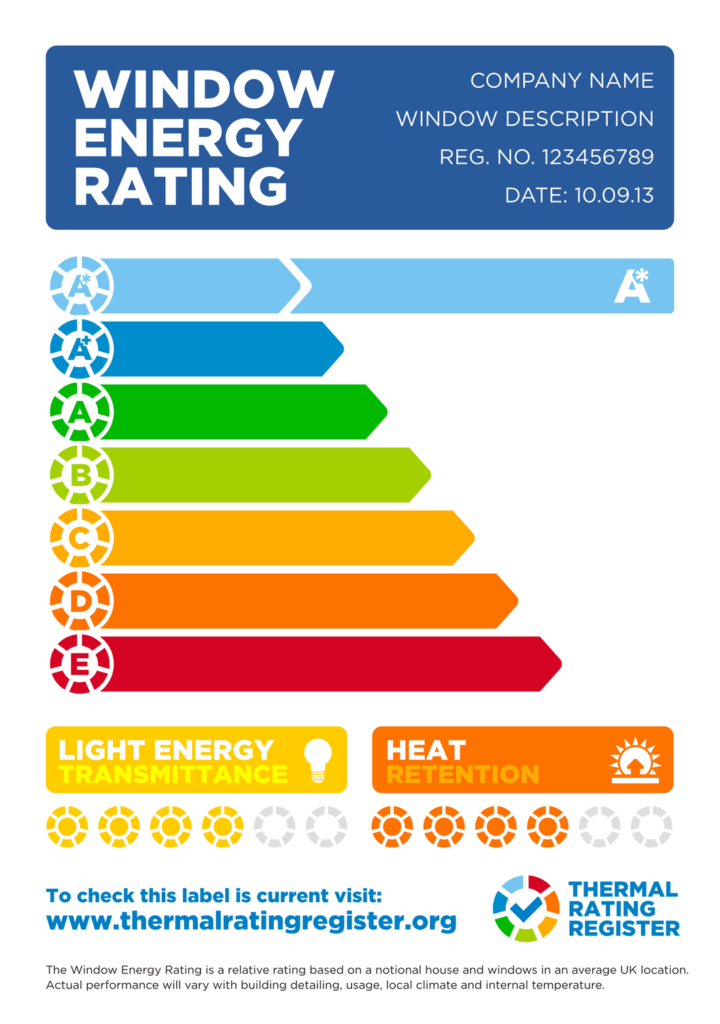
What are A-rated windows?
Windows are graded on their energy efficiency on a scale from G (least efficient) to A++ (most efficient). This rating is determined by how well a window performs in categories such as:
- Solar gain
- Heat loss
- Air leakage
Each window is scored against these categories to determine a (usually negative) number. This is translated into the letter rating system. The higher the numerical score, the better the rating. So, a G-rated window could have a score of -70, compared to an A-rated window, which may have a score of 0 or even a positive number.
There are also safety standards (PAS 24) and accreditations such as CERTASS and FENSA to ensure high-quality manufacturing and professional installation.
What are the Benefits of A-rated Windows?
A-rated windows offer several benefits over lower-rated windows, including:
- Reducing the amount of heat lost
- Lowering energy bills (by up to £140 a year)
- Reducing your carbon footprint (saving up to 380kg of carbon dioxide a year)
- Improved overall temperature control and comfort
- Better ventilation and airflow
- Reducing condensation on the inside of windows
B-rated windows
B-rated windows are cheaper to buy and install than A-rated windows but do not perform as well, aren’t as long-lasting, and don’t offer as high a return on investment.
However, B is still a high rating, so if you are on a budget, they may be a good option, at least in the short term.
C-rated windows
C-rated windows are significantly cheaper than B-rated windows but tend to suffer some heat loss, so they are unlikely to reduce your energy bills by much. However, the gap in quality is less than between A-rated windows and B-rated windows. So, if you need to upgrade old double-glazed windows quickly and on a budget, C-rated windows will still fit the bill.
Any window with a below C rating may not meet building regulations and is unlikely to be suitable for modern living. That’s why, as of October 2010, all new windows installed must have a C rating or above.
| Rating | U-Value (m²K) | G-value | L-Value | Energy Efficiency |
| A++ | 0.8 | High | Low | Highest |
| A+ | 0.9-1.0 | High | Low | Excellent |
| A | 1.1-1.2 | Moderate | Low | Very Good |
| B | 1.3-1.4 | Moderate | Moderate | Good |
| C | 1.5-1.6 | Low | Moderate | Average |
Although casement windows tend to be slightly more energy-efficient than sliding sash windows, an A-rated sash window will perform better than a B-rated casement window.
It is a legal requirement for windows to have these ratings displayed in a colourful graphic provided by the British Fenestration Rating Council (BFRC).
Window Energy Ratings (WER)
Window energy ratings (WER) are displayed as coloured stickers with letters, numbers and symbols. They provide valuable information regarding how energy-efficient a particular window is based on a series of criteria.
WERs look at the whole window; the glass, frame and seals are all important in heat retention and energy efficiency.
What is a U-value?
You may see a ‘U-value’ on a window. U-values measure the heat transference across a window to determine how well it insulates. The lower the U-value, the better it insulates and the more energy-efficient it is.
What is a G-value?
The G-value is also known as the solar factor. It measures the amount of heat from the sun that your windows let into the room. It is measured on a scale of 0-1, with 0 blocking the sun and 1 it lets in lots of heat. Your ‘solar gain’ contributes to how energy efficient the window is. Sometimes, windows are designed to block the sun, so a lower G-value is not necessarily negative.
What is a L-value?
The L-value is a measure of how airtight your window is, with a lower L-value meaning better performance. With the airtight seals on our windows, you can expect L-values of 0, so no air can escape through the seals and frame when the window is closed.
The glazing, seals, frame, gaps between the glass, and the inert gas used to fill them will all affect these scores. At Manchester Window Factory, our windows combine the latest technologies to achieve A-rated double-glazed windows at a reasonable cost.
You can take that a step further by installing our Planitherm energy-efficient triple-glazing.
What is PAS 24?
You may also see ‘PAS 24’ on the labels. This is not an energy rating but a security standard for windows and doors. To achieve PAS 24, windows and doors are tested by a United Kingdom Accreditation Service (UKAS) accredited test house to ensure that they meet British security standards. This is a minimum standard, meaning the windows and doors can withstand common attack methods and provide enhanced security for your home. Some doors and windows will be more secure than others.
Why Do Windows Have Energy Ratings?
Window energy ratings help customers make an informed choice on which windows are best suited to their needs.
For example, UPVC is usually the cheapest option, it can look like wood and can be painted but usually comes pre-coloured. It is also low maintenance. However, it can look cheap, and frames must be thicker than some alternatives and are difficult to repair. It also isn’t very ‘green’ to manufacture or recycle.
A-rated windows also provide extra comfort and can add value to your property.
When you sell or rent a property, by law, you must get an Energy Performance Certificate (EPC) for it. This is one of the factors that determines the property value.
Like WERs, EPC’s ratings run from A to G, with anything below a C being a poor rating.
According to research by Money Super Market, properties with an EPC of A are valued up to 14% higher than those with a lower rating.
Countries including Australia, Canada, New Zealand and the USA also have energy ratings on windows and doors.
What’s the difference between A and A+-rated windows?
A+ is slightly superior to A. In terms of windows, this doesn’t just mean it’s more energy-efficient. An A-rated window will only lose as much heat as it lets in from outside.
For a window to be rated A+, it must let in more heat from outside than it loses.
With A+-rated windows, you can save more on heating bills, keeping your home warm and comfortable for less. Since less heating means fewer emissions, A+-rated windows are also the most eco-friendly option.
Frame Materials
The three primary frame materials are UPVC, aluminium, and timber. Some window frames are a composite.
Each offers benefits and potential drawbacks.
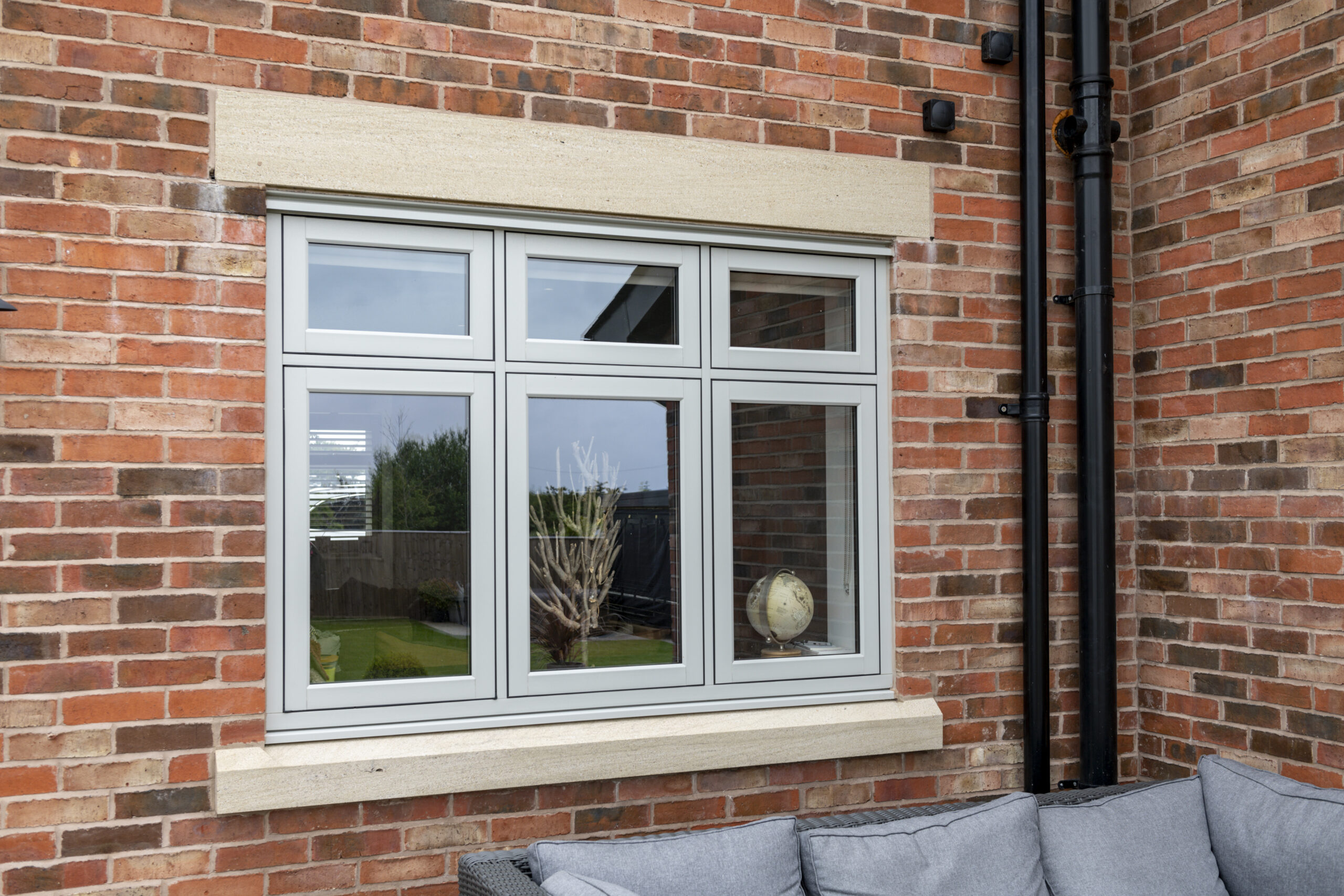
UPVC
For example, UPVC is usually the cheapest option, can be made to look like wood, can be painted, but usually comes pre-coloured and is low maintenance. However, it can look cheap, UPVC frames need to be thicker than some alternatives, and it is difficult to repair. It also isn’t very ‘green’ to manufacture or recycle.
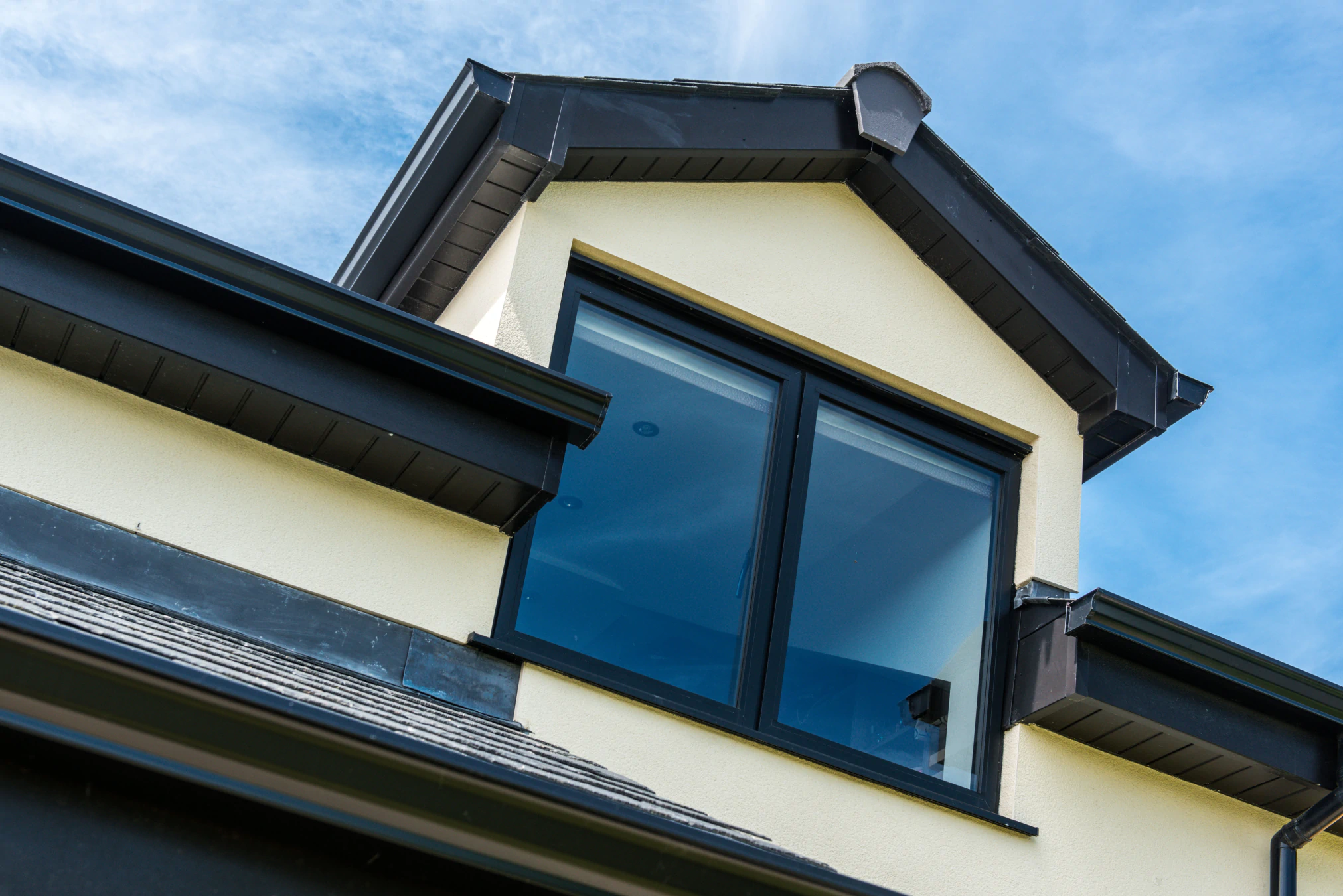
Aluminium
Aluminium is an abundant natural material that is infinitely recyclable. Aluminium windows can have ultra-slim frames and still be strong and durable and require very little maintenance. However, they are typically more expensive than UPVC.
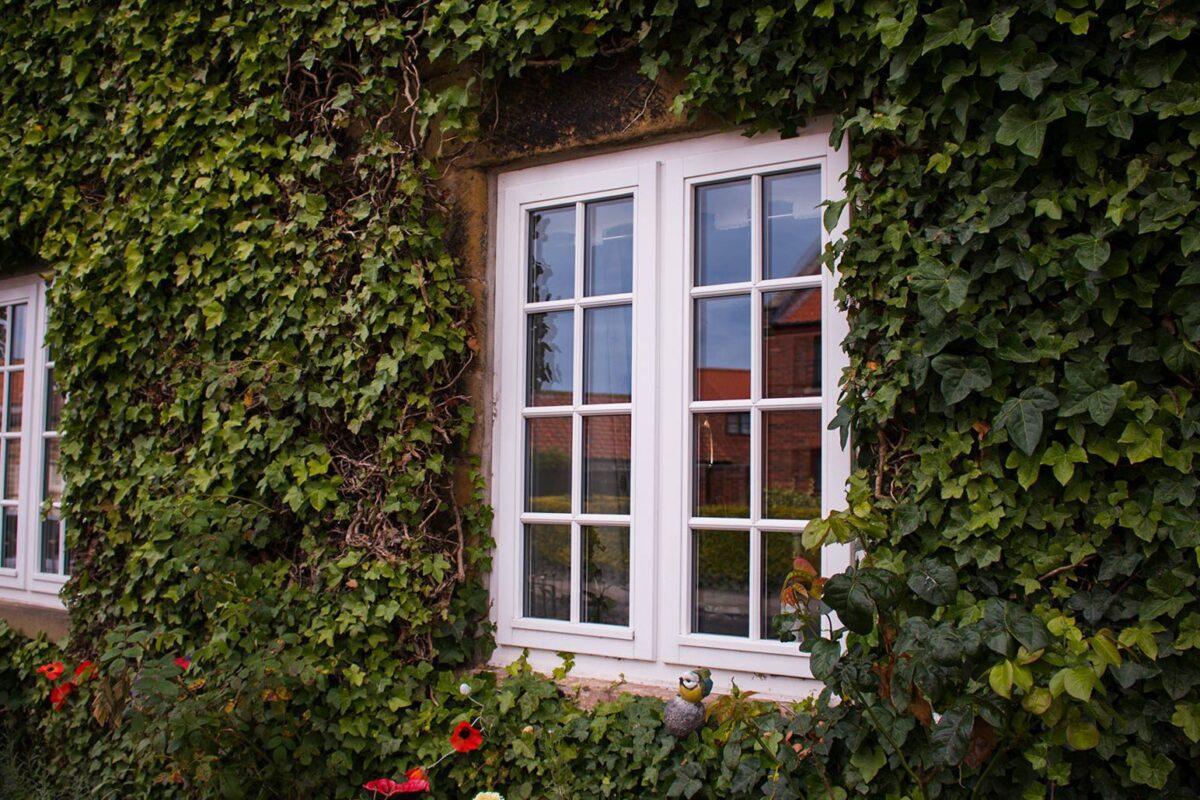
Timber
Timber windows have an authenticity that the other materials lack (although some come very close to replicating the appearance of wood). They are mid-range priced, depending on the wood used and can last up to 60 years if properly cared for. On the downside, they require more maintenance and can warp, twist, or crack.
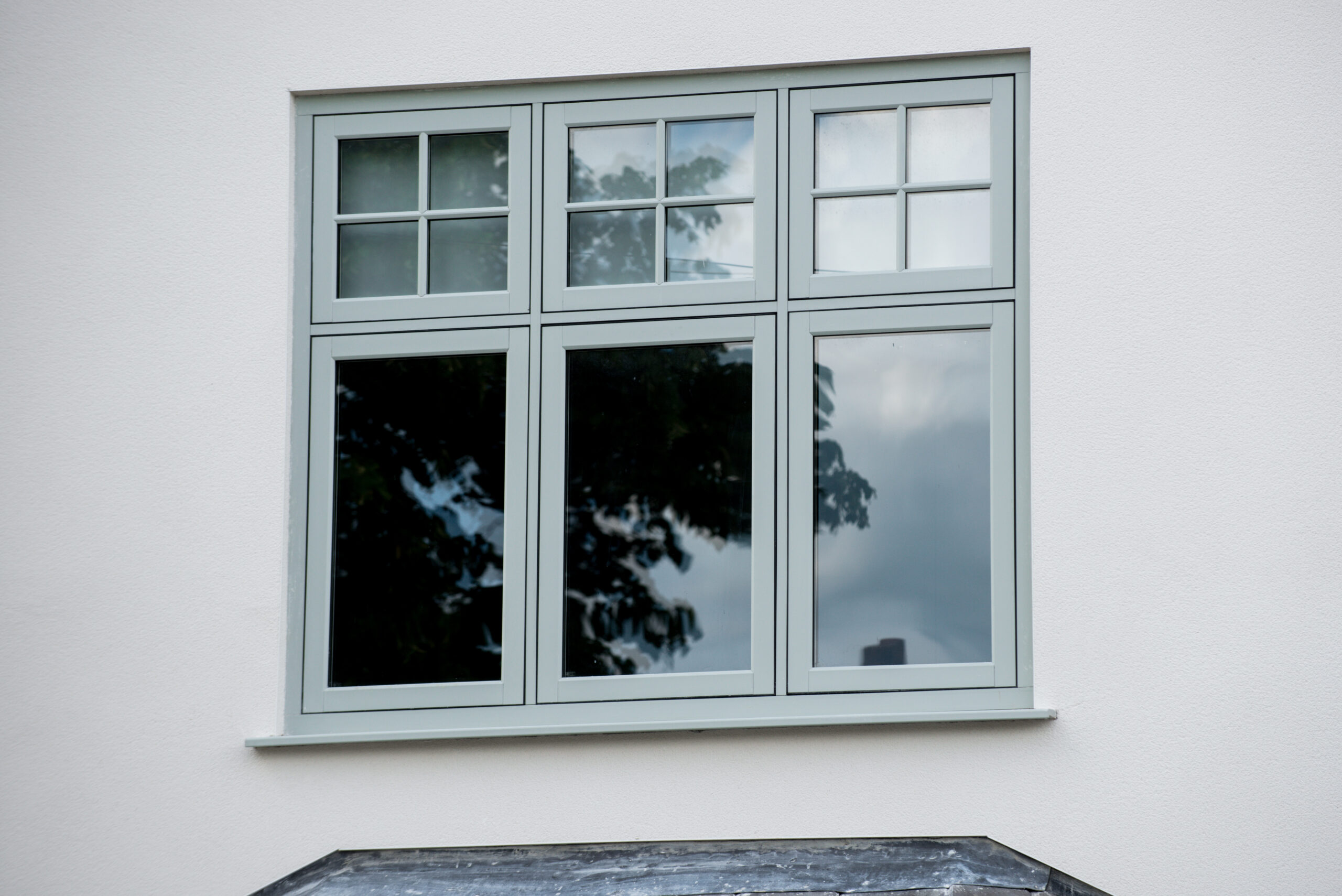
Composite
Composite windows have frames made of a mix of materials, such as timber, with some aluminium or plastic for weather resistance. They are designed to withstand harsh climates and are low maintenance. More popular in Scandinavia and Canada, they are expensive to import and may not match UK standard sizes.
You will find energy-efficient windows in each material, so which is best depends on a couple of factors, such as your budget, personal taste, location and day-to-day requirements.
How We Can Help
Even the best window in the world will not perform if it is installed poorly. Our team of in-house fitters are happy to arrange a convenient time with you to install your new energy-efficient windows for a seamless process.
If you have any further questions regarding A-rated windows or our other products and services, please don’t hesitate to get in touch. You can email us, call us, or fill in our online contact form to request a callback. If you live locally, you can also see our products in person at our Altrincham showroom.
FAQS
Installing A-rated windows can lead to lower energy bills, improved comfort, and a reduced carbon footprint, making them a worthwhile investment for your home. With new building regulations regularly coming into force regarding energy efficiency, they are also a form of future-proofing.
As of June 2022, new regulations require a maximum u-value of 1.4 W/m²K for replacement windows in existing properties and 1.6 W/m²K for windows in new-build properties.
Depending on your location, there may be grants or incentives available for installing energy-efficient windows. It’s advisable to check with local authorities or energy providers for current programs. If upgrading your windows is a priority but budget is a concern, you can apply to Kandoo for financial assistance.
Yes, energy-efficient improvements like A-rated windows can enhance property value by improving energy performance and appeal to environmentally conscious buyers. How much your property value increases directly correlates to the quality and energy efficiency of the new windows, so always buy the highest-rated you can afford.
FENSA (Fenestration Self-Assessment Scheme) is a government-authorized scheme in England and Wales that certifies windows and door installations comply with building regulations.
From national brands to small local businesses, every FENSA-approved installer is regularly assessed to ensure proper adherence to updated building regulations is consistently maintained.
FENSA certification ensures that your installation is energy-efficient, secure, and meets legal standards. Only FENSA-approved installers can issue FENSA certificates, which are typically required when you put your property up for sale.
CERTASS is a similar certification scheme that ensures window and door installations meet building regulations and quality standards. It focuses on professionalism in the installation process and compliance with legal requirements.
How to Get in Touch
If you want to find out more about creating customised windows, doors, and conservatories, please don’t hesitate to get in touch. You can call us on 0161 976 4739, use our contact form or chat with us via the chat button at the bottom right of this website. If you live locally, you can also visit our Altrincham showroom, and check our contacts page for up-to-date opening hours.
We look forward to hearing from you!




